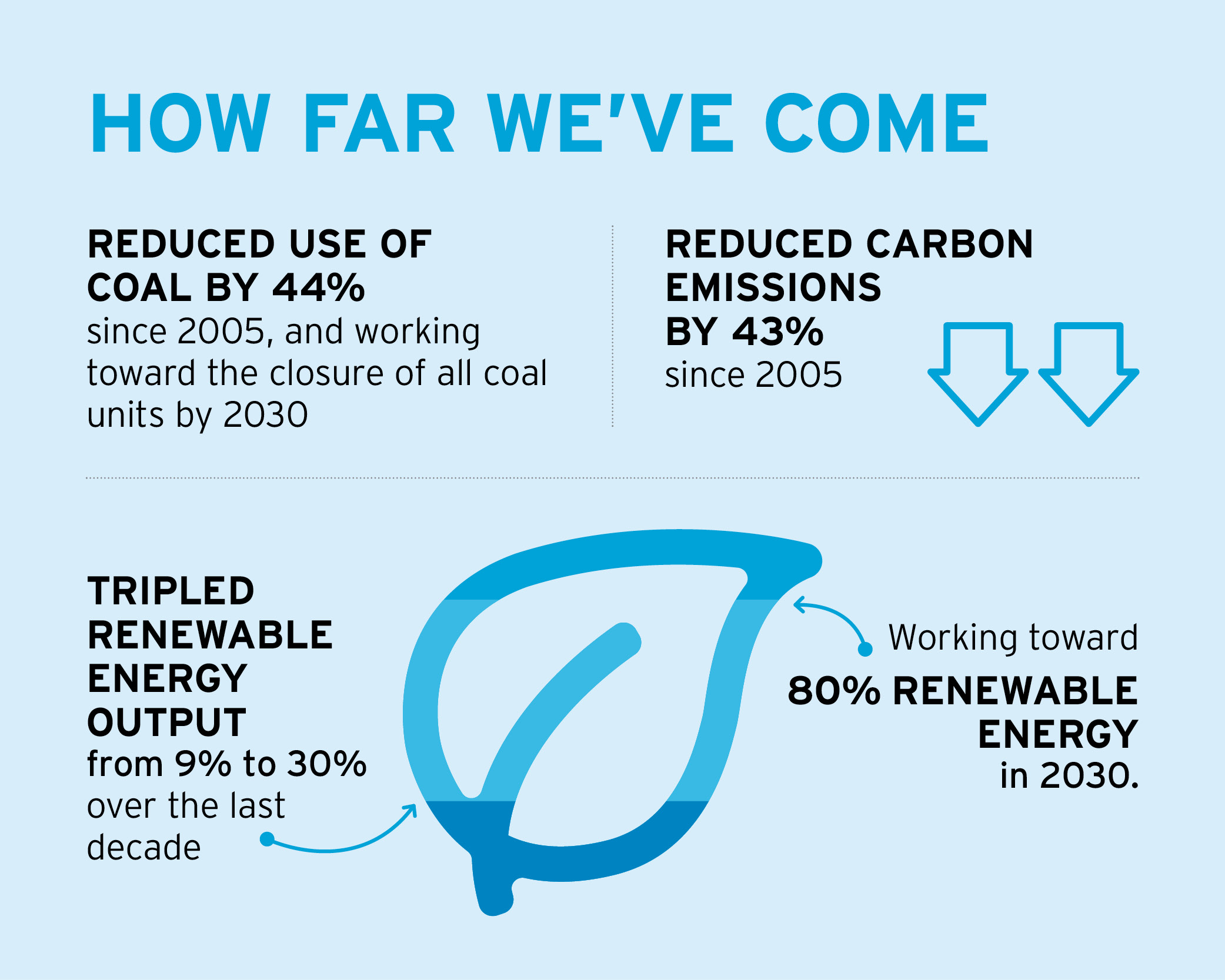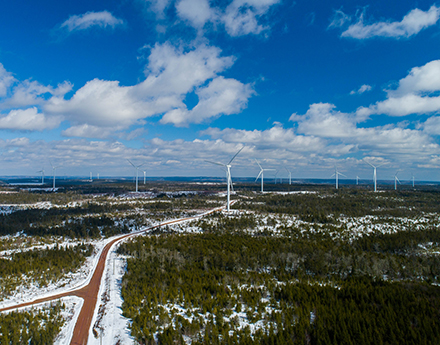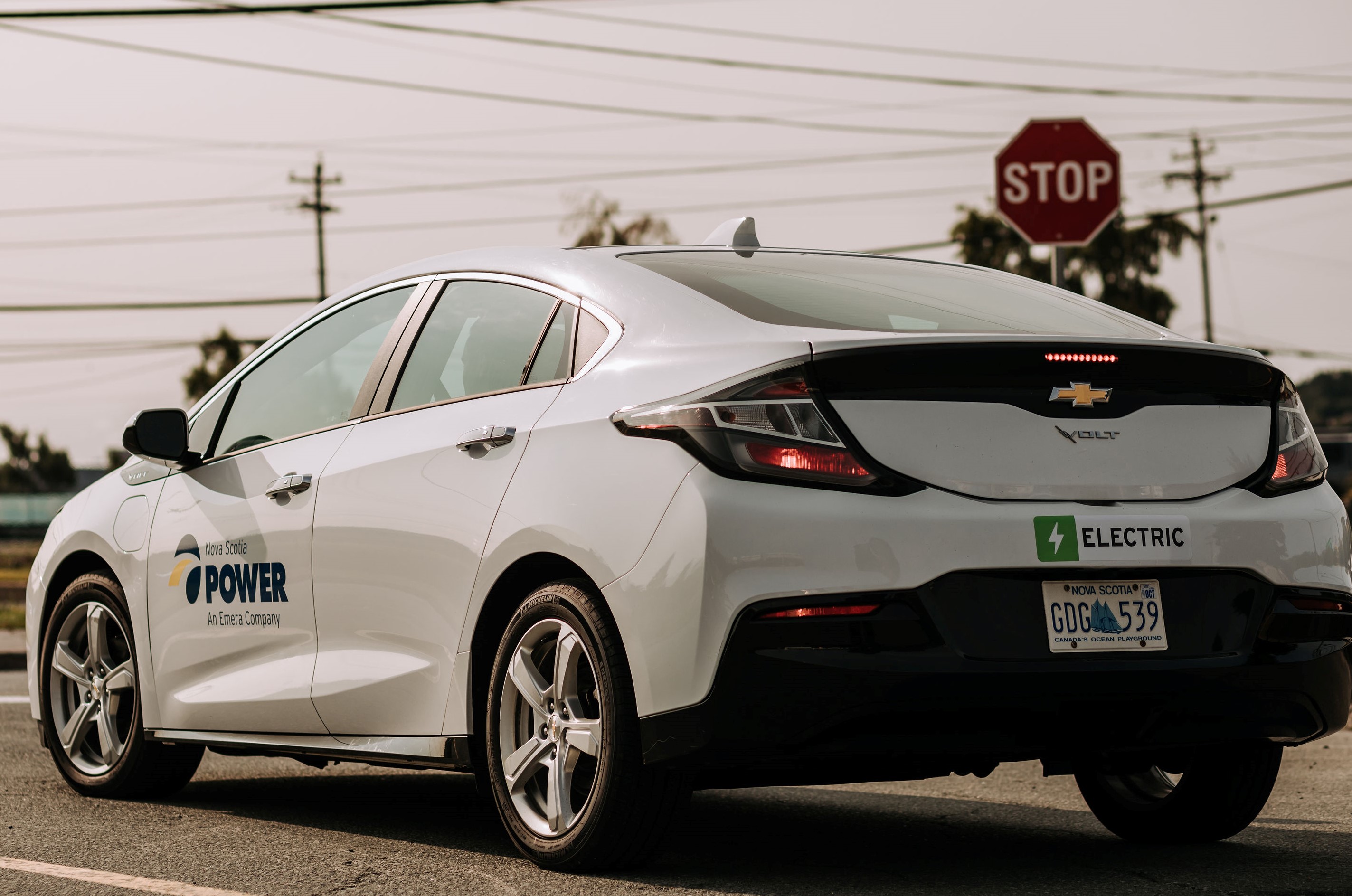What does 'net-zero emissions' mean and how will we get there?
Over the last few years, you’ve likely heard the term “net-zero emissions”. And more recently, you may have read about our shared commitment with the province to address climate change and achieve 80 per cent renewable energy by 2030. Maybe you’ve even wondered exactly how the net-zero target will impact us here in Nova Scotia.
Cutting carbon means making big changes in how we generate electricity. We asked Mark Sidebottom, our Chief Operating Officer, and lead of our decarbonization strategy, to explain the road ahead for our region.
What exactly does “net-zero” mean?
“To slow our rising global temperature, just reducing carbon emissions isn’t enough. We need to ensure that the emissions that come with day-to-day human activity are not adding to global greenhouse gases. We reach net-zero when emissions are reduced substantially, and the small amount that is left can be offset by carbon absorbing activity. To put it simply, we need to reach a point where we don’t emit more carbon than the amount that can be captured or absorbed by the atmosphere.”
What needs to change to reach net-zero emissions?
“We can’t tackle climate change without addressing how we power our lives. Canada’s largest source of greenhouse gas emissions comes from the combustion of fossil fuels to make energy, including heat and electricity. And that means, to fight climate change, we need to transform how we make energy, and remove carbon from electricity.”

What’s our plan for cutting carbon in Nova Scotia?
“We’re working towards 60 per cent clean energy, with help from the Maritime Link which is bringing clean hydro power from Newfoundland and Labrador. To keep growing our clean energy beyond that, and to get closer to net-zero emissions, we need the right generation mix.
As we transition away from coal, we need to ensure we can continue to deliver electricity that is reliable and affordable—and no one clean energy source will get us there.
Our energy future will include a portfolio of clean energy solutions. It will involve leveraging battery storage, both in customers’ homes and grid-scale batteries, so we can take full advantage of wind and solar power. It will require maintaining and upgrading our hydro facilities so they can operate for years to come. And it will mean new energy efficiency programming and collaboration with other provinces and utilities, so we can tap into clean energy resources outside of the province.”
Will this transition to clean energy take us to net-zero?
“Clean electricity plays a critical role in getting to net-zero, but we still have challenges to overcome. We have a relatively isolated grid, and we need to learn from the experience of other regions like Texas and build robust connections to neighboring utilities. This will not only help us grow our clean energy but will also ensure we can always deliver reliable electricity for our customers when they need it.
We don’t have all the answers to get to net-zero, but we’re exploring technology to help us reach that goal. This includes blue hydrogen and carbon capture and storage technology. We’re also watching the development of Small Modular Reactors. It’s all about balancing our priorities—cutting carbon and exploring new technology, while keeping electricity affordable and reliable for our customers.”
What do these changes mean for Nova Scotians?
“Once we have a low carbon economy, it will attract more businesses and open up more job opportunities. We can create an environment where businesses want to develop. And beyond that, we’re contributing to a greener, more efficient lifestyle for our customers—a future where they can heat their home, and switch to electric transportation and know that they’re contributing to a low-impact solution. It’s exciting to see how far-reaching the impact of decarbonizing electricity can be.”
Share This Post:






